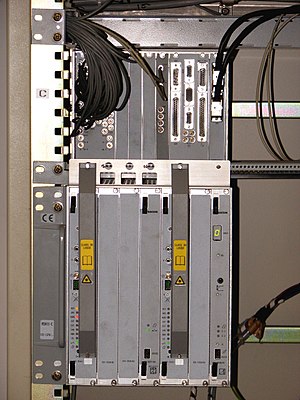Add-drop multiplexer
This article needs additional citations for verification. (July 2007) |

An add-drop multiplexer (ADM) is an important element of an optical fiber network. A multiplexer combines, or multiplexes, several lower-bandwidth streams of data into a single beam of light. An add-drop multiplexer also has the capability to add one or more lower-bandwidth signals to an existing high-bandwidth data stream, and at the same time can extract or drop other low-bandwidth signals, removing them from the stream and redirecting them to some other network path. This is used as a local "on-ramp" and "off-ramp" to the high-speed network.[1]
ADMs can be used both in long-haul core networks and in shorter-distance "
Newer "multi-service
An emerging variety of ADMs that is becoming popular as the carriers continue to invest in metro optical networks are reconfigurable optical add-drop multiplexers (ROADMs).
References
